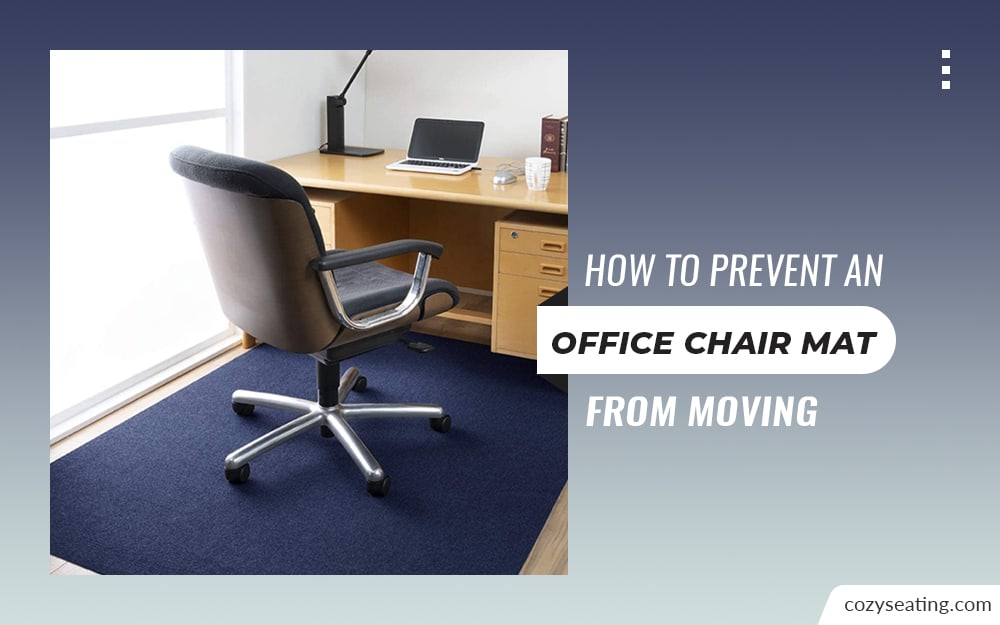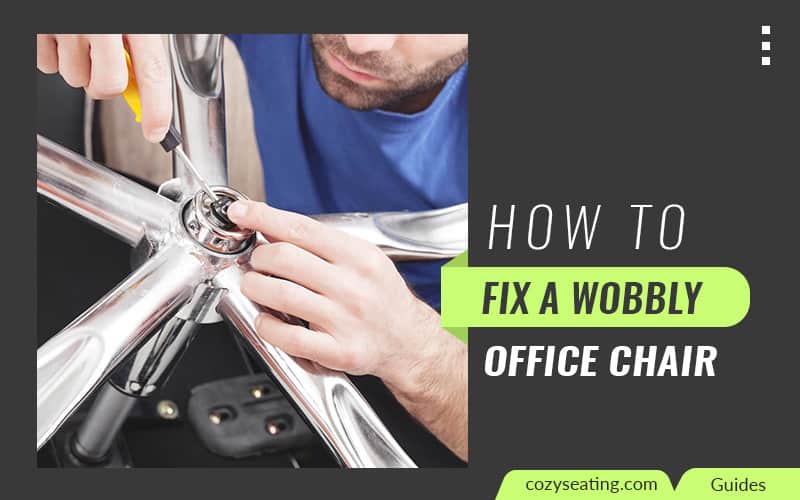
Disclosure: This site is reader-supported & contains affiliate links. We may earn a commission through products purchased using links on this page. Learn more

Millions of people, potentially billions, experience back pain, judging from the 65 million in America only. In fact, 39% of US adults had lumbago within June through August 2021.
Unsuitable chair height is amongst the reasons for strained back muscles. Sadly, you can’t get an unadjustable chair to a desirable height. But if your chair height problems arise from hydraulics, the issue is redeemable.
Dive into simple steps explaining how to fix the hydraulics on an office chair.
For starters, chair hydraulics fail because the cylinder’s valve is faulty, letting fluid flow at will. Luckily, you can fix the hydraulics on an office chair by oiling, attaching PVC, or clamping the cylinder. For the best fix, stop your hydraulic chair from sinking through cylinder replacement.
Table of Contents
Why Do Chair Hydraulics Fail?
A well-used chair can develop hydraulic component problems. A piston regulates the valve controlled by the seat height lever. If the chair keeps sinking, the valve has issues, leading to uncontrolled fluid flow within the cylinder.
You may either oil the cylinder, replace its piston, or buy a new chair cylinder to remedy it. However, piston replacement is complex and likely unfeasible at home. While these three hacks allow for height adjustability, you can also opt for others with a fixated height, including:
- PVC fix
- Clamp fix
How to Fix the Hydraulics on an Office Chair By Oiling
Sit on the chair and see how it sinks. Do you sense friction as your chair’s height decreases? If so, lubricate your chair.
Apply WD40 on the chair’s joints. Grease its under-seat nuts, screws, and bolts. Also, oil the chair’s mechanism.
How Do You Fix Hydraulics in an Office Chair With PVC?
- Adjust your chair to a preferred height, then measure the gas cylinder’s exposed height.
- Determine the width of the gas cylinder.
- Buy a suitable PVC tubing to fit that section of the cylinder.
- Cut one side of the pipe end-to-end and with a height similar to the exposed gas cylinder.
- Place the piece around your cylinder.
How Do You Stop Your Hydraulic Chair From Sinking by Clamping?
- First, set your desired height.
- Tighten your hose clamp around the lift, close to the mechanism
- Then wrap the clamp in duct tape. The duct tape acts as an additional holder to prevent sliding down.
This is a temporary fix, as duct tape loses its grip after repeated use.
How To Fix The Hydraulics on an Office Chair By Replacement
Wear gloves before starting for protection. Then, spread newspapers or torn garments on the flooring to protect it from stains and impact damage. Finally, flip your chair over on the protected surface to begin.
- Tighten a pipe wrench close to the chair’s mechanism and round the cylinder.
- Twist the wrench bit by bit until the cylinder loosens. With a screwed-on gas lift, you’ll need a screwdriver.
- Hit the base’s underside with a rubber mallet to release the cylinder. A hammer can also do, but it may cause impact damage.
- If the cylinder is stubborn, spray it with WD-40 and let it sit for a while. Hit the cylinder a bit more forcefully with your mallet to break its resistance.
- Finally, attach the new desk chair cylinder to the base. Ensure you acquire a compatible cylinder with a suitable height adjustment range.
FAQs
Can a Hydraulic Chair Be Fixed?
Often, a hydraulic chair can be fixed, whether sinking, stuck in recline, or another issue. If sinking, begin by oiling as it’s the most straightforward fix. Should the chair continue misbehaving, clamp the cylinder or attach PVC. But if you want a permanent fix, replace the gas lift.
Why Does My Hydraulic Chair Keep Going Down?
Your hydraulic chair keeps going down due to a faulty valve. The valve controls fluid flow in your hydraulic cylinder. When it loses its elasticity, the fluid shifts chambers unobstructed; hence, it causes your chair to sink.
Can You Refill Hydraulic Chair?
You cannot refill hydraulic chair in case the valve malfunctions. Replace the cylinder, therefore, if you don’t like clamping or attaching PVC. Pick a compatible cylinder with the desired height range.
Conclusion
Indeed, steps on how to fix the hydraulics on an office chair are pretty simple. Plus, you can pick solutions that suit you, whether you have a tight or flexible budget.
Maybe, you only need oiling, a hack that requires little time and no tools. You can resort to clamping or attaching pipes for budget solutions to faulty hydraulics where friction isn’t the issue. Nonetheless, cylinder replacement guarantees a long-lasting fix.
Recommended Reading

How To Prevent An Office Chair Mat From Moving Around
Are you wondering how to prevent your office chair mat from moving around? Here’re the 20 best ways to stop your mat from sliding. They’re easy and effective!

Are Office Chair Cylinders Universal?
Most buyers ask, are office chair cylinders universal? Yes, most are. But, their strokes and body lengths differ. The link below has more details, click.
![How to Make Office Chair Higher [9 Easy Ways]](https://cozyseating.com/wp-content/uploads/2021/09/How-to-Make-Office-Chair-Higher.jpg)
How to Make Office Chair Higher [9 Easy Ways]
This article will show you how to make your office chair higher. This is a great way of making your chair more comfortable and also of good ergonomic value.

How to Fix a Wobbly Office Chair in Easy Steps
Does your office or home have a wobbly chair? Check out this quick guide on how to fix a wobbly office chair and keep it stable again!
